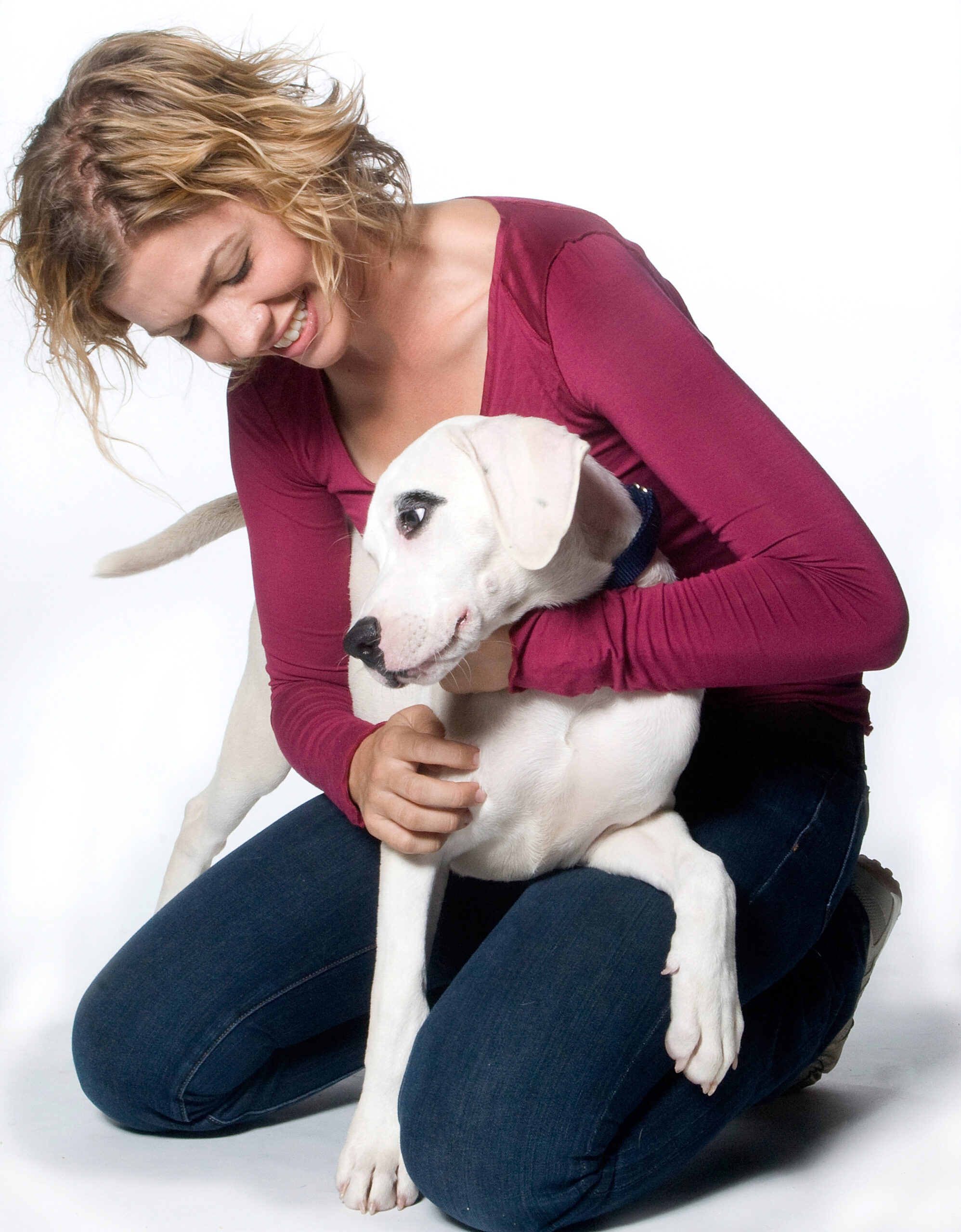
Is Your Dog a Pushy Pants?
Two things happened recently that made me think of pushy dogs. First, I went to a conference this weekend that included a buffet lunch (I suspect at least some of you can already see where this analogy is going). Secondly, I was driving into work today and had to cross over a bridge that had construction and was tapered down from two lanes to one.
In the case of the latter, cars merged together smoothly because each car in the remaining lane allowed a car from the lane that was being shut down to move in front of them. This procession went along swimmingly until some guy in a van decided to shove ahead and try to squeeze in before it was his turn. From the traffic stall that ensued, it was obvious that this act of impoliteness and not following general merging rules had infuriated the fella in the car behind him (who technically should have ended up in front of the pushy driver had the rules been followed). It also caused the rest of us behind him to be inconvenienced as the two drivers yelled at each other for a few moments.
Likewise, at the conference luncheon, people lined up for their meal in an orderly fashion. But, one conference goer must have thought that her hunger pains where far more pressing than those of the rest of us, so she ever so subtly slid in to the line ahead of about 20 or so people who had been waiting patiently. This caused some eye rolls and whispered remarks about rudeness, but the line cutter didn’t blink an eye and proceeded to fill her plate to the brim.
Understanding Pushy Behavior in Dogs
In both cases, it is fair to assume a couple of things about the people who chose the pushy approach:
1. Someone had regretted to teach them good manners at a young age.
2. They had been reinforced for their pushy behavior in the past.
The same can be said for dogs that exhibit pushy behavior. The main difference is that when dogs behave in a similarly impolite manner they are generally referred to as ‘dominant.’ I think this is a much harsher (and less accurate) way of describing this sort of behavior and does a great disservice to the speed and efficacy of resolving the matter since it sets people up to have a negative mindset about their dog’s personality.
Pushy dogs simply need to learn a bit of patience and self control as well as what exactly we want them to do in particular situations in order to ask politely for what they want. This might be sitting to walk out the front door for a walk (as opposed to grabbing a the leash, bouncing about wildly and dragging you out), lying down on a mat or dog bed while you eat your dinner (as opposed to jumping on you or the table).
While in the process of helping your pushy dog learn self-control and manners, it is wise to employ the use of management tools that will help you help your dog avoid practicing pushy behaviors. Remember that every time a behavior is allowed to be practiced it is likely to become a stronger habit (think about the old saying “practice makes perfect”). Management might be keeping your dog on a leash and tying to a stable object away from the dining room table and giving your dog a chew toy to play with.
Developing a Pushy Pants Recovery Program
A pushy pants recovery program should ideally begin with you writing down a list of how you want your dog to behave in different environments and contexts. Be specific because this is going to be a little guidebook for you and the rest of the family to follow so you can all provide consistent guidance for your dog.
Once you have thought through what the rules will be and how you will employ management you should start working on some basic self control exercises with your dog. Start with one of the easiest impulse control exercises: Hold a tiny treat about 12 inches above your dog’s head and simply wait for your dog to keep four feet on the floor for the count of two. If he jumps up for the treat (pushy pants!) simply lift your hand up and away without saying anything. When four feet are on the floor again, count to two and say “Yes!” if your dog doesn’t jump up. Then offer the treat. Gradually increase the count (i.e. how long your dog must remain with four paws on the floor before you mark and reward). The marker is the word “Yes!” and it tells your dog what they were doing at the exact moment they heard it is what earned the reward. Now try working in different areas of the home, with different treats and with toys. Pretty soon your dog will have a good foundation of impulse control. Stay tuned for how to build on this foundation with more advanced canine self control exercises.
Explore Our Dog Training Courses
Educate your dog with Andrea Arden and her team.
New York | Los Angeles | Connecticut
Share
- Group Classes
- Private Lessons
- Virtual Training
- Puppy Play Groups
- Puppy Training
- Articles & Advice


